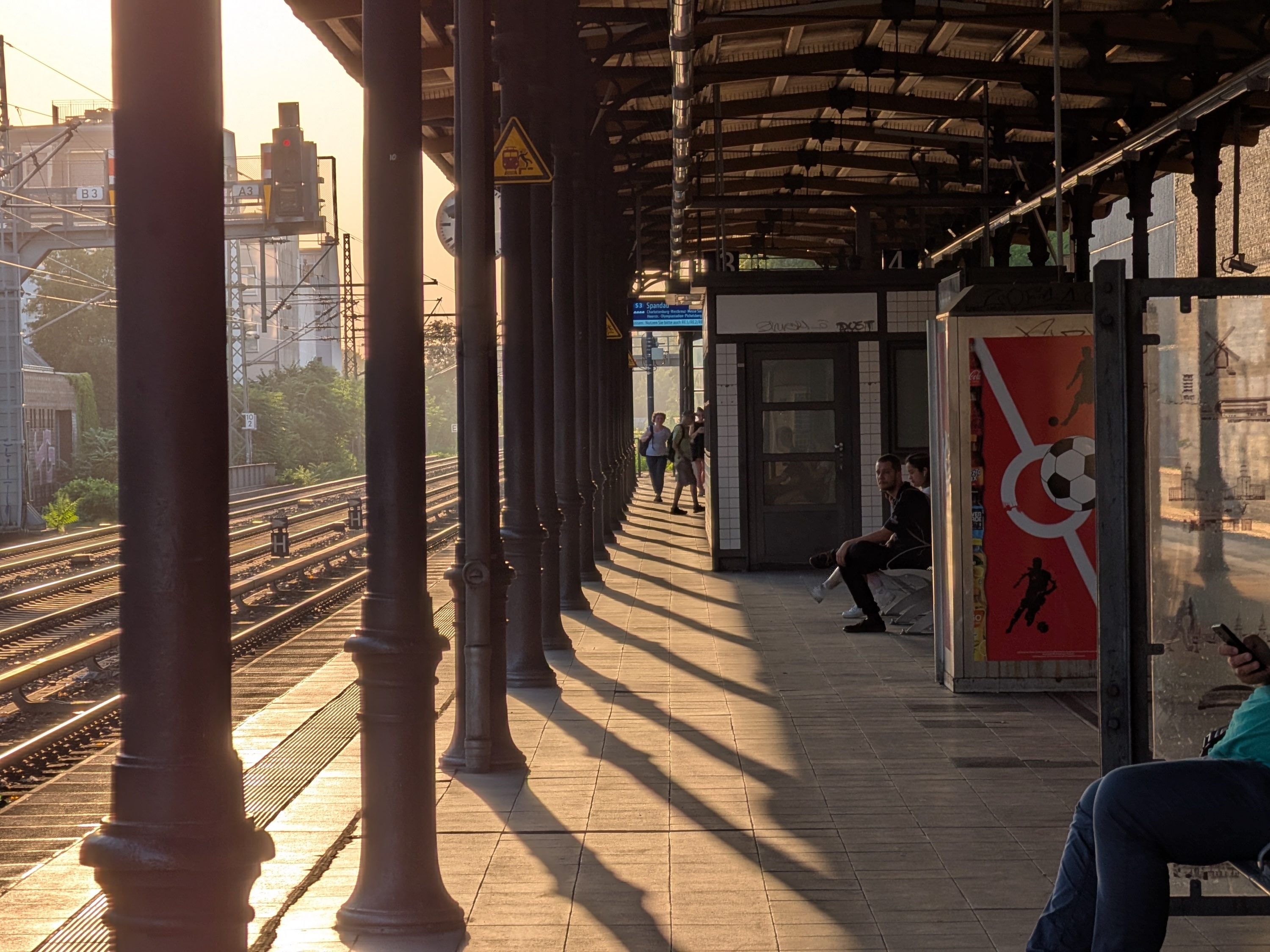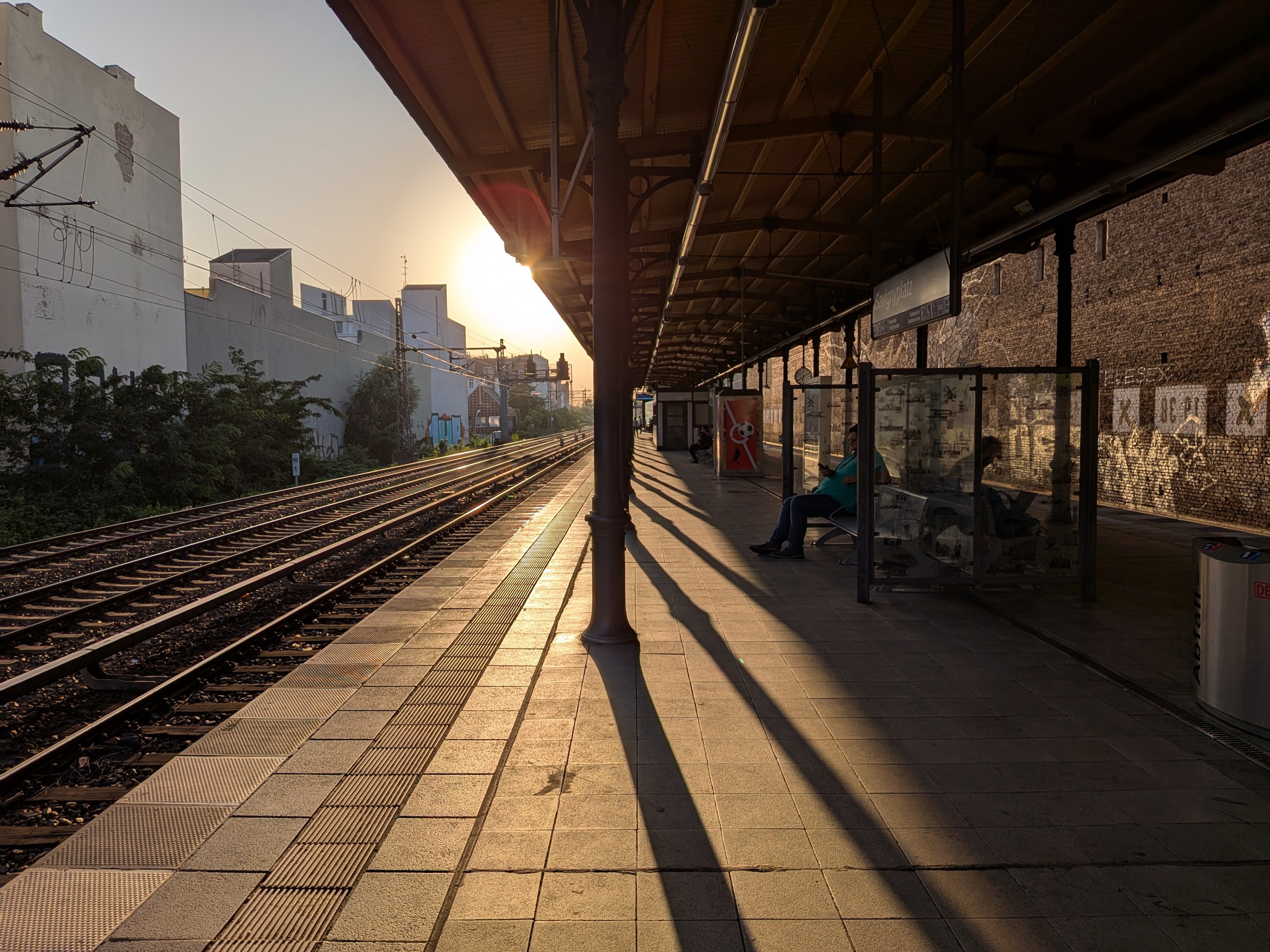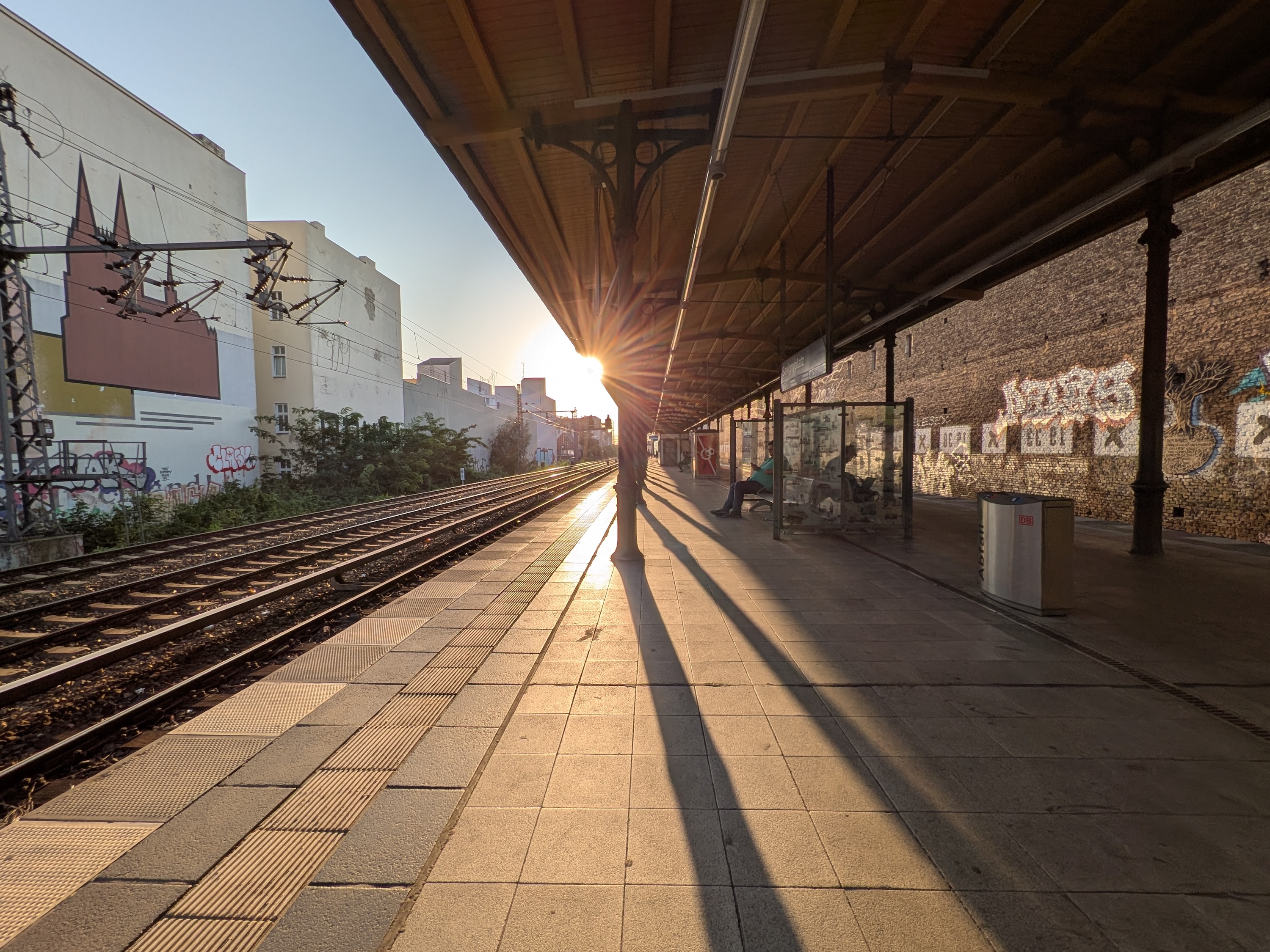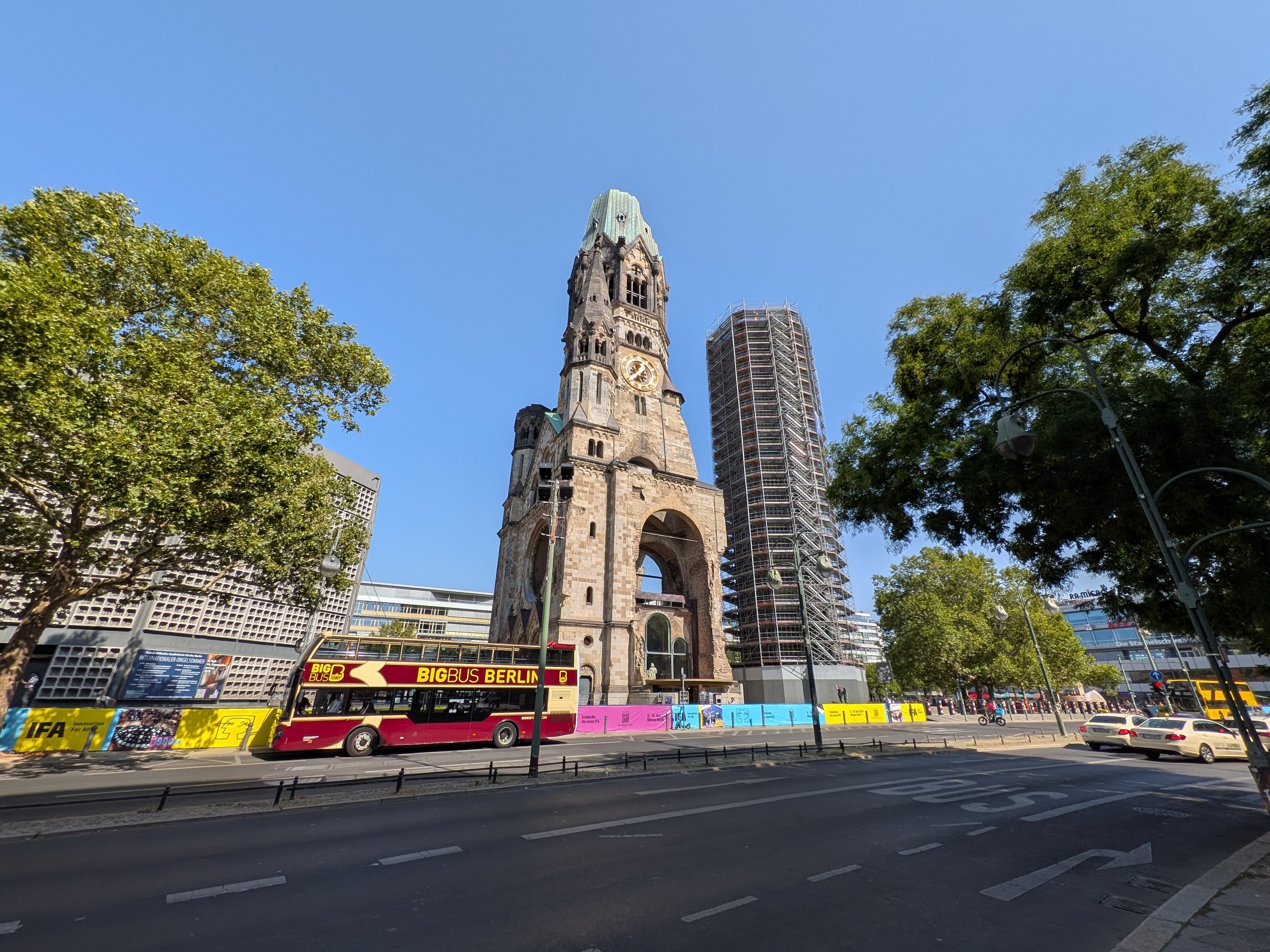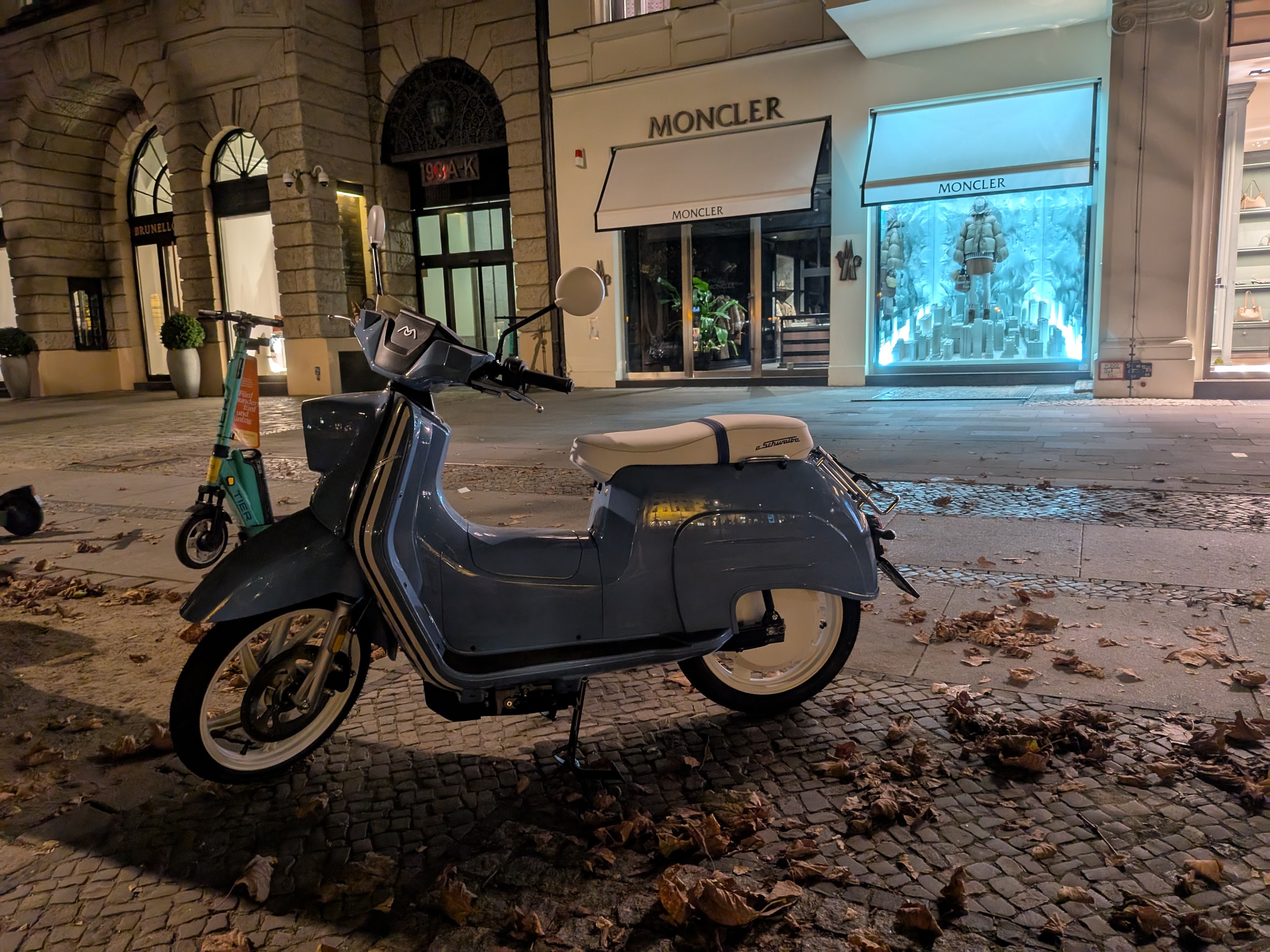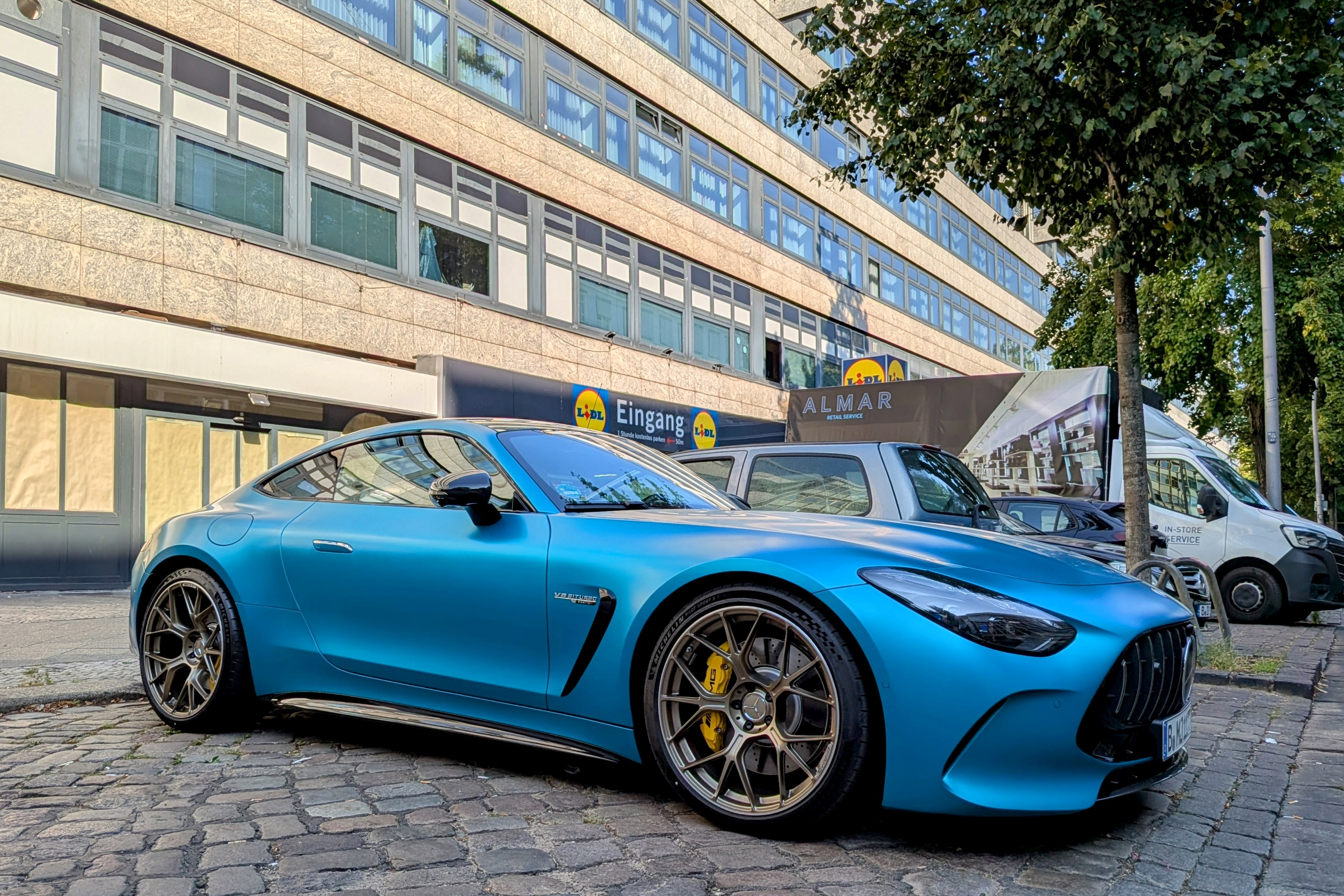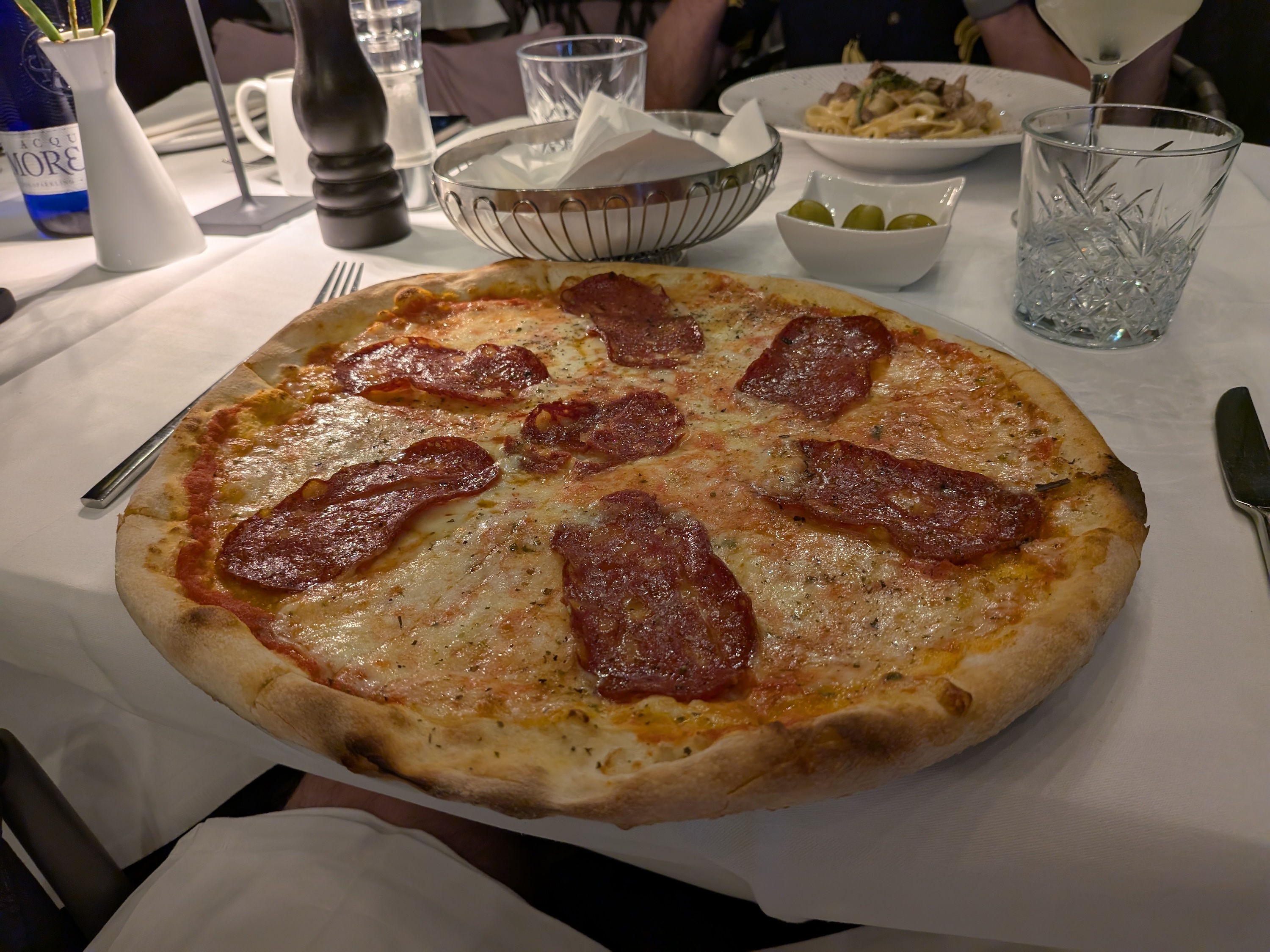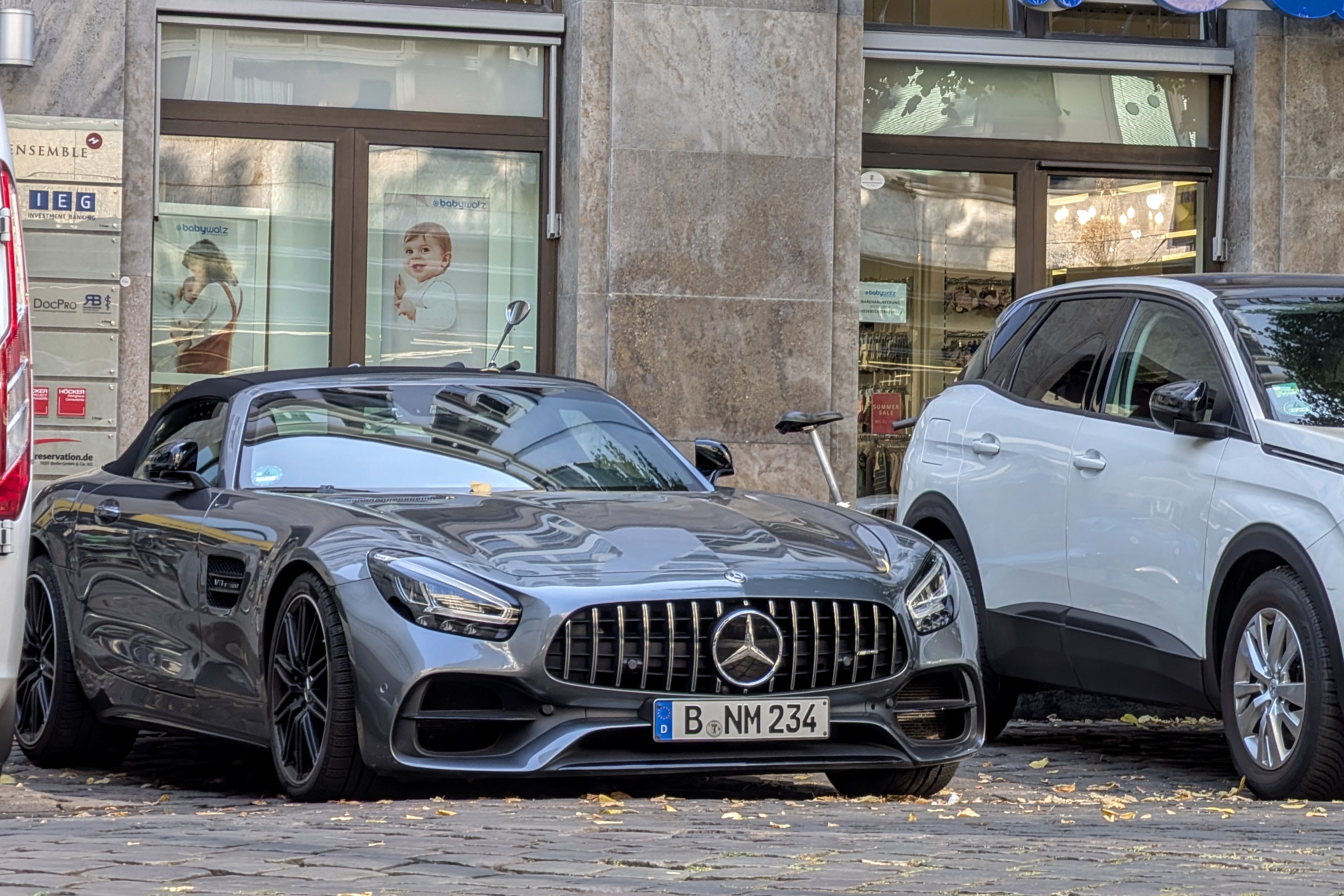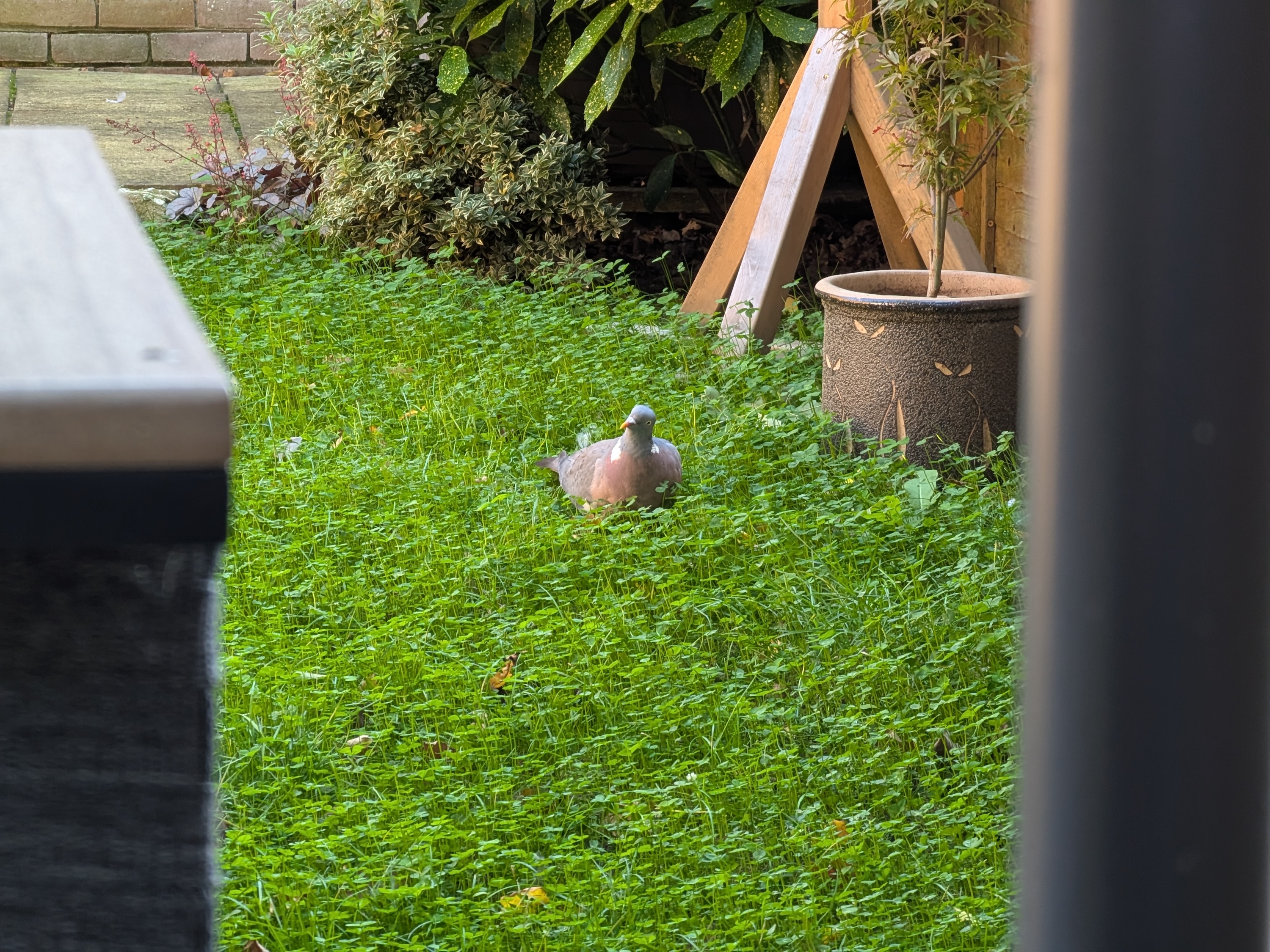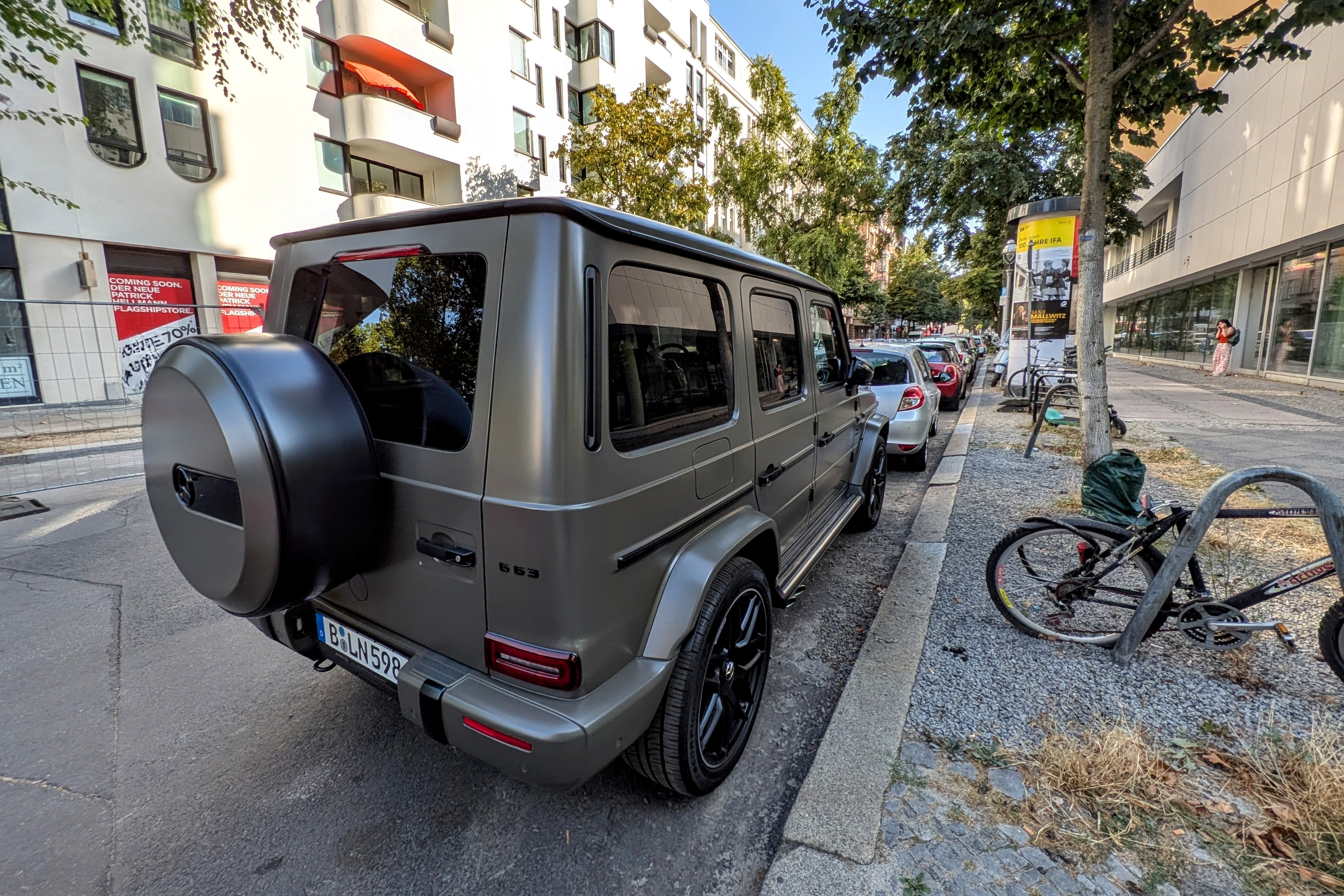“The Google Pixel 9 Pro Fold is an entertainment powerhouse. It's a truly excellent foldable and one I think you'll love.”
- Brilliant screen for games and video
- Versatile and fun camera
- Long software update commitment
- Superb build and design
- Thin and well-balanced
- Free year of Gemini Advanced
- Slow charging
- Heavy
- Expensive
I’ve been using the Google Pixel 9 Pro Fold for a few weeks now and am absolutely in love with it. I probably should tease you more about my overall opinion, but when a phone is this good, it seems disingenuous to hide the fact.
Of course, it’s not perfect, but crucially, it manages to overcome one of the biggest hurdles regarding living with a big folding phone daily. What is it? Well, for that, you’ll just have to read on to find out.
Google Pixel 9 Pro Fold: design

What has happened at Google HQ? This year, it has completely nailed how to build a fantastic smartphone. The Pixel 9 and Pixel 9 Pro are not only good-looking, but also beautifully made, and it’s mostly the same story with the Pixel 9 Pro Fold. The satin aluminum chassis is cool to the touch and expertly rounded, while the entirely silent hinge has a linear, perfectly dampened motion. It feels so well put together that you’d think Google had made folding phones for decades.
The Gorilla Glass Victus 2 rear panel has a matte finish and a subtle texture, differentiating it from the Gorilla Glass Victus 2 over the screen on the front. The camera module is perhaps the only slight misstep in the design, as it’s not as unique or characterful as the Pixel 9 series’ stadium-shaped module or the visor design used for the Pixel 8 series. It’s also pretty thick and detracts from the otherwise slim 10.5mm closed phone.

This is a huge deal. At 10.5mm, the Pixel 9 Pro Fold is several millimeters thinner than the Samsung Galaxy Z Fold 6 and OnePlus Open and not much thicker than the Honor Magic V3. During the time I’ve spent with the 9 Pro Fold so far, it has not felt much different from using my iPhone 15 Pro Max in its case. If you’ve been waiting for a folding phone that’s ergonomically extremely similar to a big, non-folding phone, this is it.
The Pixel 9 Pro Fold feels so well put together.
While the Pixel 9 Pro Fold has overcome this long-standing folding phone problem, it is still a heavy phone at 257 grams, which makes it more portly than its competition and very noticeable in your pocket. Put it in a case and it only gets heavier, but I’ve been using it without and relying on the build and IPX8 water resistance to keep it safe.
The other jarring design aspect is the decision to curve the glass on the front and back at each corner but not the metal chassis. It looks a bit strange and, paired with the cover screen’s thick bezel, makes the phone look bigger than it actually is.

However, I’ll take a gawky design decision and a few grams over what would be anideal weight when the rest of the build and the overall engineering are otherwise spot-on. Google has set the bar high for smartphone design and construction with the Pixel 9 series, and the Pixel 9 Pro Fold comprehensively eclipses the old Pixel Fold’s design and build. It is a truly delectable piece of hardware.
Google Pixel 9 Pro Fold: screens

On the outside of the closed Pixel 9 Pro Fold is a 6.3-inch OLED Actua Display with a 2424 x 1080 pixel resolution, a 60Hz to 120Hz refresh rate, and a 1,800 nits of brightness. Open the phone up, and you get an 8-inch Super Actua OLED screen with a 2152 x 2076 pixel resolution, a 1Hz to 120Hz refresh rate, and a 1,600-nit brightness.
The open screen is the reason you should buy the Pixel 9 Pro Fold. It’s bright, sharp, colorful, and fantastic for playing games, watching videos, or browsing apps and the internet without straining your eyes. The Pixel 9 Pro Fold’s 5.1mm thickness, when unfolded, makes it really easy to hold, and because the balance is so well-judged, it never becomes fatiguing. I’ve spent far too long browsing Reddit, trying to choose a watch on Watchfinder’s website through Chrome, and scrolling through Threads. Instagram still looks pretty poor, but otherwise, I found compatibility with the open screen to be acceptable.

I’ve been playing Air Attack 2, which not only looks great, but is much easier to play on the large open screen, as there’s more space around your finger as you guide the plane around. I don’t notice the crease when the screen is open and a video is playing unless I’m viewing it at an angle, but you do feel it with your finger when playing games. I don’t find it a problem, though. The Tensor G4 chip does not cause the phone to get hot in my experience, and I have not noticed any slowdown when playing games or when using the software.
Multimedia is where the Pixel 9 Pro Fold’s strengths lie, and while you can run two apps side by side on the open screen, you can’t add a third floating window. And the process for opening apps is more convoluted and less reliable than on the Galaxy Z Fold 6, for example. There’s no dedicated taskbar either, only the usual Android app toolbar, which has fewer options and slows things down when switching between multiple apps. I’d choose the Galaxy Z Fold 6 for work-related multitasking, but I love the Pixel 9 Pro Fold for video, photo editing, and general entertainment.
Google Pixel 9 Pro Fold: camera

The camera on the Pixel 9 Pro Fold is weird, at least when you compare its specs with other Pixel 9 cameras and then take the price into consideration. It has a 48-megapixel primary camera, a 10.5MP ultrawide camera, and a 10.8MP telephoto camera with a 5x optical zoom and a maximum 20x Super Res Zoom. It has optical and electronic image stabilization (OIS and EIS) on both the primary and ultrawide cameras, plus laser autofocus and a spectral sensor for color accuracy.
Despite the Pro name, it has a lesser specification than the Pixel 9 Pro and is also different from the Pixel 9. It has more in common with the previous-generation Pixel phones on paper, and that’s not a good look when Google expects you to pay twice the price of a Pixel 9 for it. But numbers don’t always tell the whole story, and the good news is the Pixel 9 Pro Fold’s camera still takes great photos.
I wrote an entire feature on the Pixel 9 Pro Fold’s camera, which I used to go car spotting in Berlin and put its 5x telephoto camera through its paces. It takes sharp, clean, and colorful photos with plenty of detail, even when you crop down. What I like the most is the color and contrast balance, which carries over to the primary and ultrawide cameras. The results are consistent between all three cameras; it rarely fails to give photos a beautiful and natural tone, but it never oversaturates. In low light, it still brings out color, even in the shadows. There’s even an effective (if a bit fiddly to activate) macro mode to get close to subjects.
The numbers don’t do the Pixel 9 Pro Fold’s camera justice. It takes excellent photos in almost any situation without any fuss. Plus, there are all the fantastic editing features available in Google Photos, and they’re even more powerful than ever. Like the phone itself, the Pixel 9 Pro Fold’s camera is an excellent all-rounder.
Google Pixel 9 Pro Fold: software and AI

Android 14 is installed on the Pixel 9 Pro Fold, and it’ll get seven years of main OS and security updates, which means Android 15 will count as one of them when it’s released. However, before you get too up in arms about it, consider whether you’ll still own the Pixel 9 Pro Fold in six years’ time. Google’s Tensor G4 and 16GB of RAM provide the behind-the-scenes power.
Google isn’t using Android, the camera, the folding screen, or handy features like the split Gboard keyboard that makes typing on the open screen so simple to sell the Pixel 9 phones: It’s using Google Gemini AI. Just like other Pixel 9 series phones, the Gemini AI platform takes the place of Google Assistant here. Like other AI systems, it can help plan events, teach you about different subjects, translate text, summarize emails and messages, generate images, and perform a host of other somewhat helpful tasks. The Pixel 9 Pro Fold comes with one year of free access to Gemini Advanced, like the other Pixel 9 Pro phones.

What’s it like? I’m so conditioned to using a text-based Google Search query that I have to force myself to use Gemini Advanced. I’m considering starting to play Magic: The Gathering Arena, and I wanted to get an idea of how it compares to my days of playing the physical card game. I asked Gemini Advanced for advice, and the conversation flowed well. There was no need for continued clarification of the subject, and I felt it answered my questions in a satisfactory manner.
It was certainly faster than me doing a text-based search, and Gemini’s responses were instant. Otherwise, the functionality is quite niche, and you may not use it all that often. My life isn’t so hectic that I need Gemini to help plan things, for example, and features like generating images are playthings I can’t imagine I’d use apart from trying it out.
The Pixel 9 Pro Fold’s software has been faultless.
Compared to using basic Gemini on the Pixel 9, it’s a far more feature-rich experience. If you have already seen where Gemini Advanced will save you time, it’s worth experimenting with if you buy the Pixel 9 Pro Fold. You’ll quickly learn whether it’ll be worth the $20 per month to continue with it after a year. However, Gemini works on many other modern Android phones, so you don’t have to buy a Pixel to use it. It’s also definitely not a reason to buy a Pixel 9 phone.
Still, Android itself remains superb on Google’s phones, with a fun, clean, customizable design, plus very smooth and responsive performance. The Pixel 9 Pro Fold’s software has been faultless for me and is a genuine advantage over other Android phones, while Gemini is capable and nice to have, but not essential at all.
Google Pixel 9 Pro Fold: battery and charging

The Google Pixel 9 Pro Fold has a 4,650mAh battery inside that is recharged using a USB-C cable or Qi wireless charging. You do not get a charging block in the box, but the phone supports up to 45-watt wired recharging. During my use, the Pixel 9 Pro Fold’s battery lasts, on average, for two days without playing games. However, when you add gaming to the mix, it’s unlikely to make it deep into the second day.
Expect between three-and-a-half to five hours of screen time from a single charge. Given the multitasking and productivity potential of the Pixel 9 Pro Fold, this may not be adequate for power users. Watch a 30-minute, 2160p YouTube video at full brightness, and the battery depletes by 6%, and a 30-minute session of Air Attack 2 uses up about the same amount. Keep the brightness on auto, and battery life does improve, but I’ve found the ambient light sensor is quite aggressive, resulting in me manually increasing the brightness fairly often.
When it comes to charging, the Pixel 9 Pro Fold is disappointing. I used an Anker Prime charger with a compatible USB-C cable, and it took 90 minutes to recharge the 9 Pro Fold’s battery. This is twice the amount of time it takes to recharge the OnePlus Open’s battery using its proprietary 67W charger. Overall, the Pixel 9 Pro Fold’s battery life and recharging match that of the Samsung Galaxy Z Fold 6 and are average rather than outstanding.
Google Pixel 9 Pro Fold: price and availability

Take a deep breath because this is an expensive phone. The Google Pixel 9 Pro Fold costs $1,799 or 1,749 British pounds, and you only get 256GB of storage space. You can now purchase it through Google’s online store and other outlets.
Big-screen folding smartphones are all expensive, and the Pixel 9 Pro Fold costs basically the same as the Samsung Galaxy Z Fold 6, the OnePlus Open Apex Edition, and the Honor Magic V3. Only the Tecno Phantom V Fold 2 costs less, and there’s a reason for it — it’s a midrange phone, not a flagship.

The Pixel 9 Pro Fold’s biggest problem is that non-folding flagships cost a lot less. You can save at least $500 by buying the Google Pixel 9 Pro XL, the Samsung Galaxy S24 Ultra, or the iPhone 16 Pro Max. No, they won’t fold up, but they will do everything else really well, if not better, than the 9 Pro Fold. You should think carefully before spending so much on Google’s folding phone, regardless of how good it is.
Google Pixel 9 Pro Fold: verdict

I’m in love with the Google Pixel 9 Pro Fold. Closed, it’s as close as I need to a “normal” phone’s shape and dimensions, and opened up, it’s a video and entertainment powerhouse. The build quality and design are superb, far better than any previous Pixel phone, and it feels substantial in your hand. It’s an expensive smartphone, but importantly, it also looks and feels like one.
I’m in love with the Google Pixel 9 Pro Fold.
The software is a delight to use. The camera is versatile, fun, and takes great photos in almost all situations — plus, there’s a wealth of editing tools that are a joy to play with on the open screen. I’ve mostly forgotten that it’s a big-screen folding smartphone, by which I mean it has overcome many of the ergonomic issues that earlier models suffered from. It’s more fun than the Samsung Galaxy Z Fold 6, but it’s not quite as wonderfully well-rounded as Samsung’s phone, which is better for multitasking and work. I’m also a fan of the Z Fold 6’s slender cover screen, which makes the phone lighter and more compact, plus I have more faith in its long-term durability due to the dust resistance and special Armor Aluminum construction.

Over the last weeks, I’ve gone from using the Google Pixel 9 to the Pixel 9 Pro to, finally, the Google Pixel 9 Pro Fold. I’ve definitely saved the best for last, and it’s the one I’d keep my SIM card in long-term if I had that choice. The cost is the obvious issue, as although I’m raving about this phone, $1,800 is an obscene amount to spend on a smartphone. However, if you can stomach it and plan to keep your new phone for several years to eke out as much value from it as possible, there isn’t another real reason not to get one.

